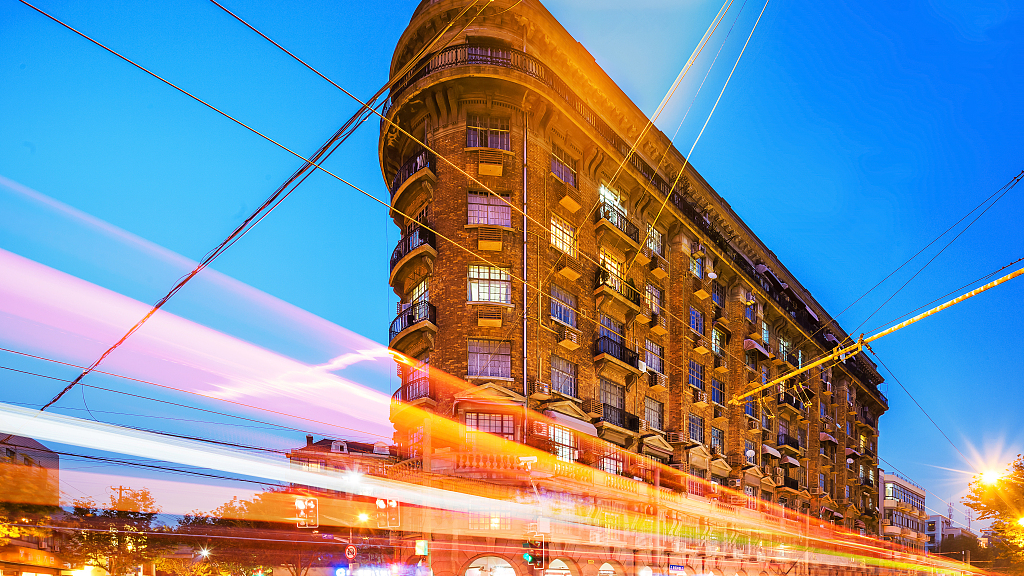
The view of historic buildings at Huaihai Road in Shanghai, which features a variety of historic architecture. (Photo: VCG)
Visitors to the Hengfu Style and Features Pavilion in Shanghai can now learn more about the stories of historical buildings in the city through multimedia presentations that can be accessed by scanning a QR code or by clicking an icon on the display screen within the pavilion.
Built in 1930, the architecture in which the pavilion is located is now used as a virtual museum for the historical structures located along Hengshan Road and Fuxing Road, allowing visitors to view iconic buildings in augmented reality and read descriptions about them.
The pavilion also has a reference room with an interface that can display buildings and roads, the celebrities who once occupied the residences in the city, and more than 20,000 archived documents.
The pavilion is working in tandem with the city's Architecture Readable Project, which was launched in 2018. Co-promoted by the Shanghai Municipal Administration of Culture and Tourism and six district governments-Xuhui, Hongkou, Huangpu, Jing'an, Yangpu and Changning-the project aims to help the public learn more about the city's historic architecture. There are currently more than 1,000 old buildings that people can read about thanks to this initiative. These buildings received 7.65 million visitors in the first half of this year.
According to the authorities, the city is planning to add another 142 old buildings to the database by the end of this year. The six districts in the city are also aiming to make QR codes available at 2,180 buildings by the first half of next year.
To welcome the Shanghai Tourism Festival, the Architecture Readable Project has been upgraded to include an English guide, videos and virtual reality elements.
"To promote the development of the tourism industry, we have jointly launched 87 distinctive architectural city-walk routes that allow visitors to learn more about Shanghai," says Yu Xiufen, the director of Shanghai Municipal Administration of Culture and Tourism.
Each district will have unique offerings during the tourism festival. In Jing'an, visitors can experience a virtual reality tour of 101 locations within the district. There will also be immersive experiences at places such as the Site of the Second National Congress of the Communist Party of China, Jing'an Villa, the Ohel Rachel Synagogue, the Shanghai Natural History Museum and the Starbucks Reserve Roastery.
"Historical buildings are the foundation and soul of a city. We will further expand the reach of readable buildings and use advanced technology to infuse life into these structures," says Liu Xie, deputy governor of Jing'an district.
Meanwhile, Xuhui district, which has 253 historic buildings, has set up teams to provide interpretation service for tourists during the festival, while Changning district has cooperated with media brand Time Out and review site Dianping to compile high-quality Chinese and English guides and develop an online system that recommends nearby facilities, restaurants and cultural experience activities.


